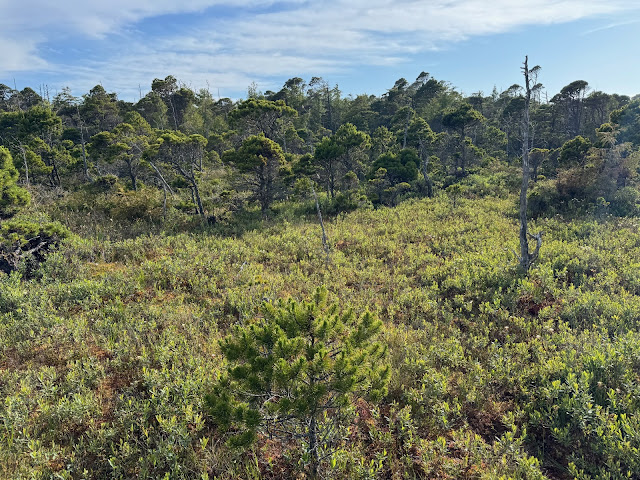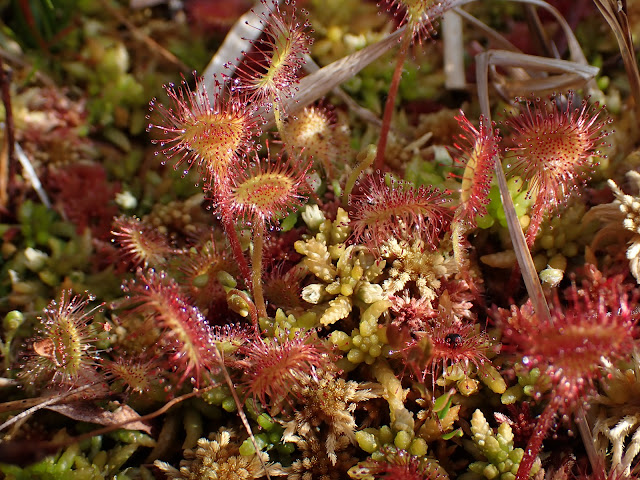There are aspects of my neighborhood that are characteristic of modern suburban communities elsewhere. Curvilinear streets, lush green lawns, and mulched young parkway trees. There are residents walking their dogs and riding bicycles. Children play in the cul-de-sacs. For a lot of people, picturesque. Safe. Ideal.
But lurking in the shadows like trolls under a bridge are the toads. Squat, rotund little beasts that appear out of place in such a dignified setting. Seeing one is a matter of chance. On summer days, they are occasionally exhumed from their earthy sanctums by well-intentioned gardeners. And at night - especially humid nights - they may be seen hopping across a driveway or sidewalk while hunting for food. But I'd venture that most people hardly ever see toads. At least here, where I live, in a quiet, prim and proper corner of suburbia.
The toad knows its way around the kitchen. Here, they originate in the wetlands across the quiet, two-lane road near my house. The most substantial and likely only permanent marsh is a little over 1500 feet away. The toads breed here each spring, their songs filling the night air with the most elegant and harmonious trill. Eggs are laid in long strands and hatch quickly into tiny black larvae. By mid-summer, the larvae metamorphose into tiny, frail toadlets. And these toadlets quickly disperse away from the water to higher ground, often across the quiet two-lane road and into the neighborhood.
Few of the toadlets actually make it. Most succumb to the elements, to predation, and to human-related factors such as vehicles and lawnmowers. Those lucky enough to avoid these challenges grow quickly and in a matter of a month can quintuple their size, no longer dark and frail but now resembling a smaller version of a mature toad.
The toadlets do not know what's in store for them in Meadow Wood. They just know it's higher ground. Most will never know what nature is. Instead, they will find an alternate reality that ironically is well-suited to their lifestyles.
As it turns out, a suburban neighborhood has a lot to offer to toads. Mulched gardens for burrowing, lots of hiding places in the form of home exterior features, and maybe most importantly, an absence of snakes. In the eight years I've lived here, I've never found a single gartersnake in my neighborhood. They are more at home down in the prairie and wetlands below where they enjoy a variety and abundance of prey and have no need to leave.
Toads are common in the Chicago region and I've been guilty of passing them up in the past. But living here has opened my eyes to how ingenious they are. I truly appreciate them and value each sighting (although I stopped photographing and Herpmapping every single one years ago).
A male toad trying to attract a female. This was taken at the marsh across the street.
This toad spent the better part of the summer of 2018 living under our front stoop. And each night it would roost under a horizontal length of downspout. Protected from above and in the path of bugs tracing the perimeter of the porch.
Another porch toad engaged in Operation Bug Interception.
One of countless toads I see in our overgrown side yard.
This toad is likely a female but her dad bod game is strong.
This is a screen grab from a now infamous video where Lumen, clearly under the weather and spewing snot every which way, gently picks up a toad, laughs maniacally, and shouts, "Daddy, I got the code!".
A very large toad.
Lumen holding the very large toad. This was a particularly hot and dry summer and as I recall, this was one of only a few toads seen the entire summer.
The toads are quite variable in appearance. This one is a bit more orange.
I watched this toad for some time as it sat under the outdoor light on the garage. It had learned that insects congregate at the lights and often fall to the ground. Here, it sizes up a small insect.
This was One-Eyed Willy. Willy lived directly across the street from me, each night appearing at the edge of the sidewalk. Each night on my walk, I'd check on Willy and like clockwork, he was practically in the same spot.
Long live the toads of Meadow Wood!









.jpg)








.jpg)

.JPG)



















.jpg)






.jpg)




.jpg)













